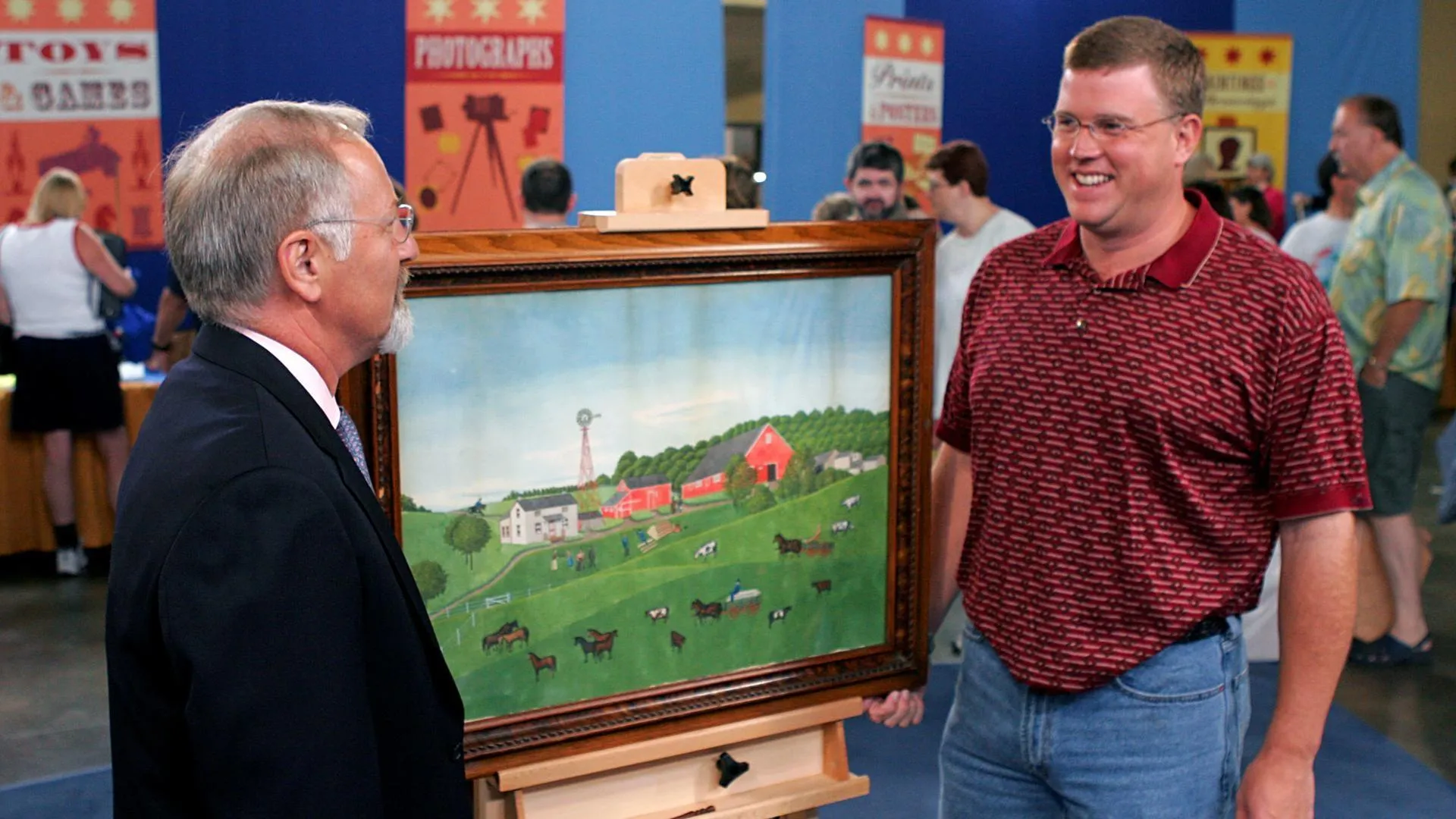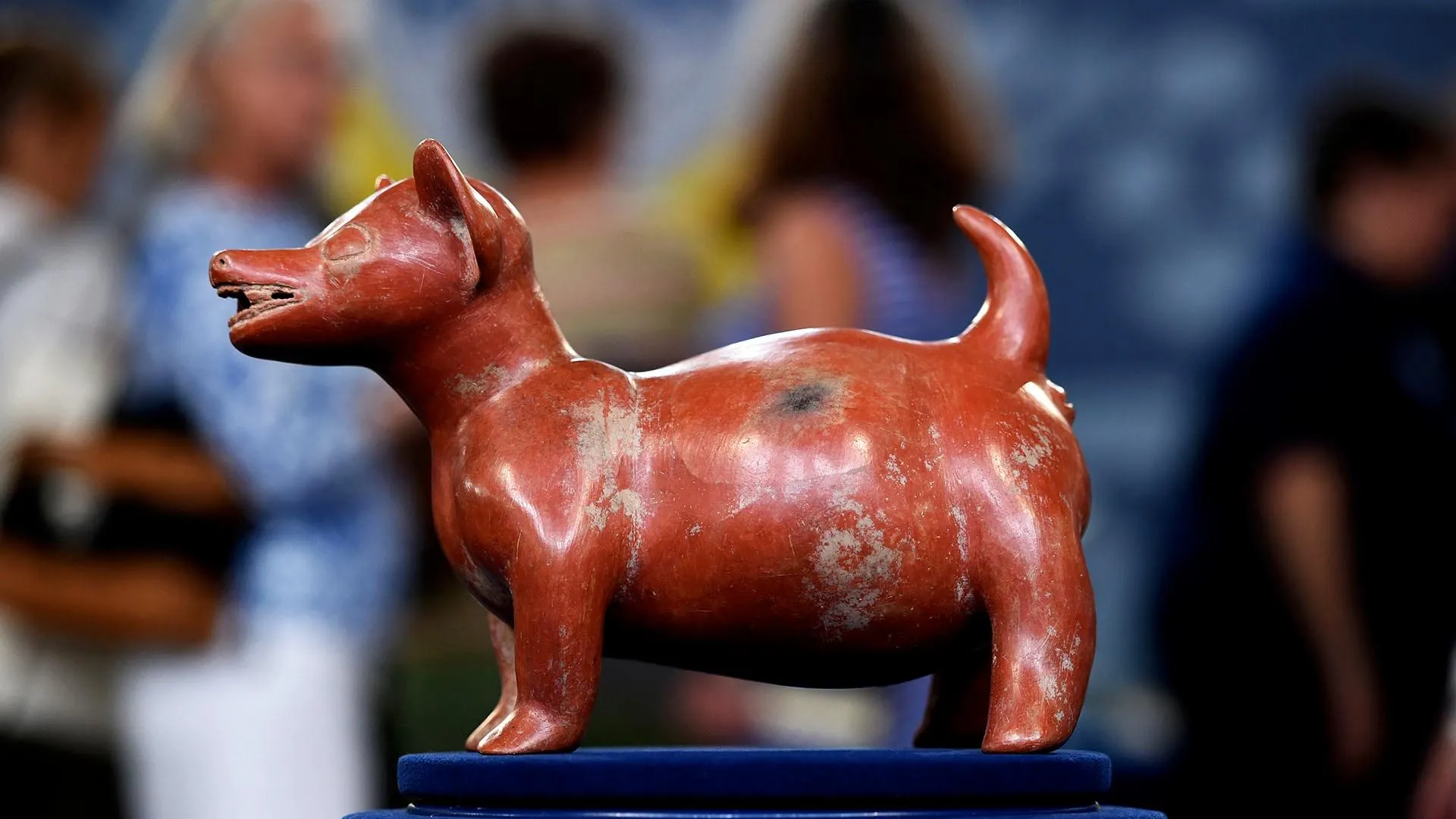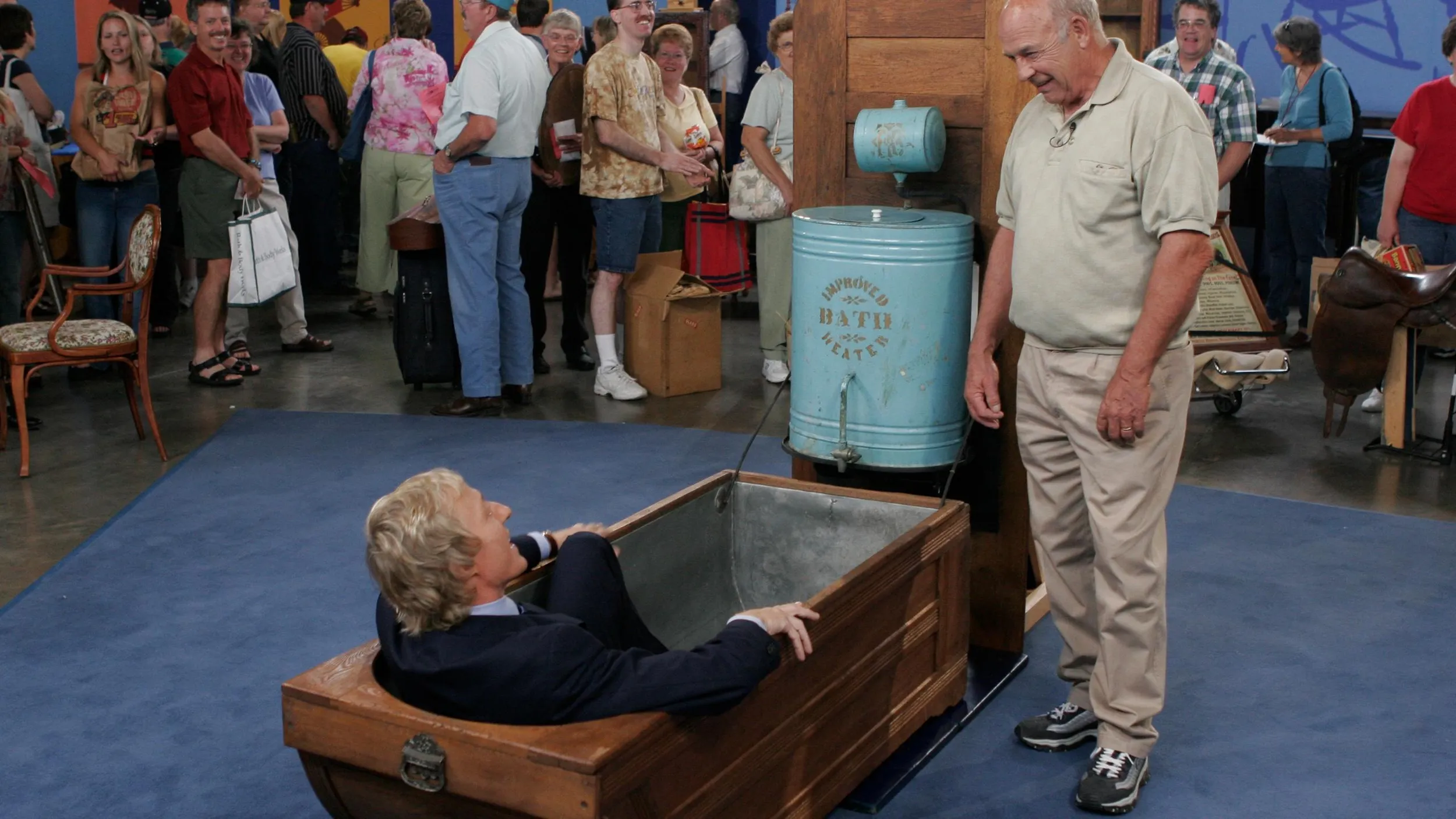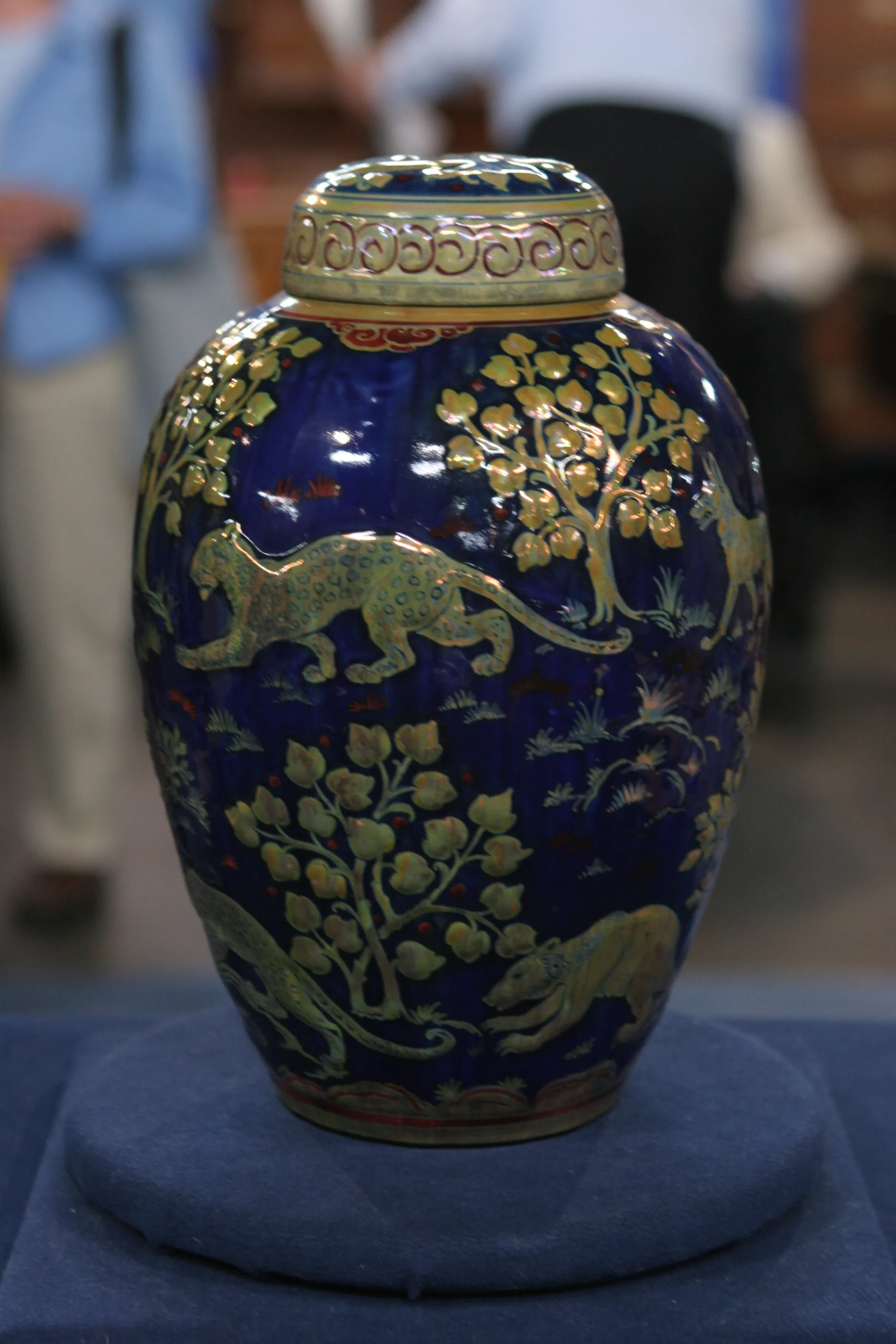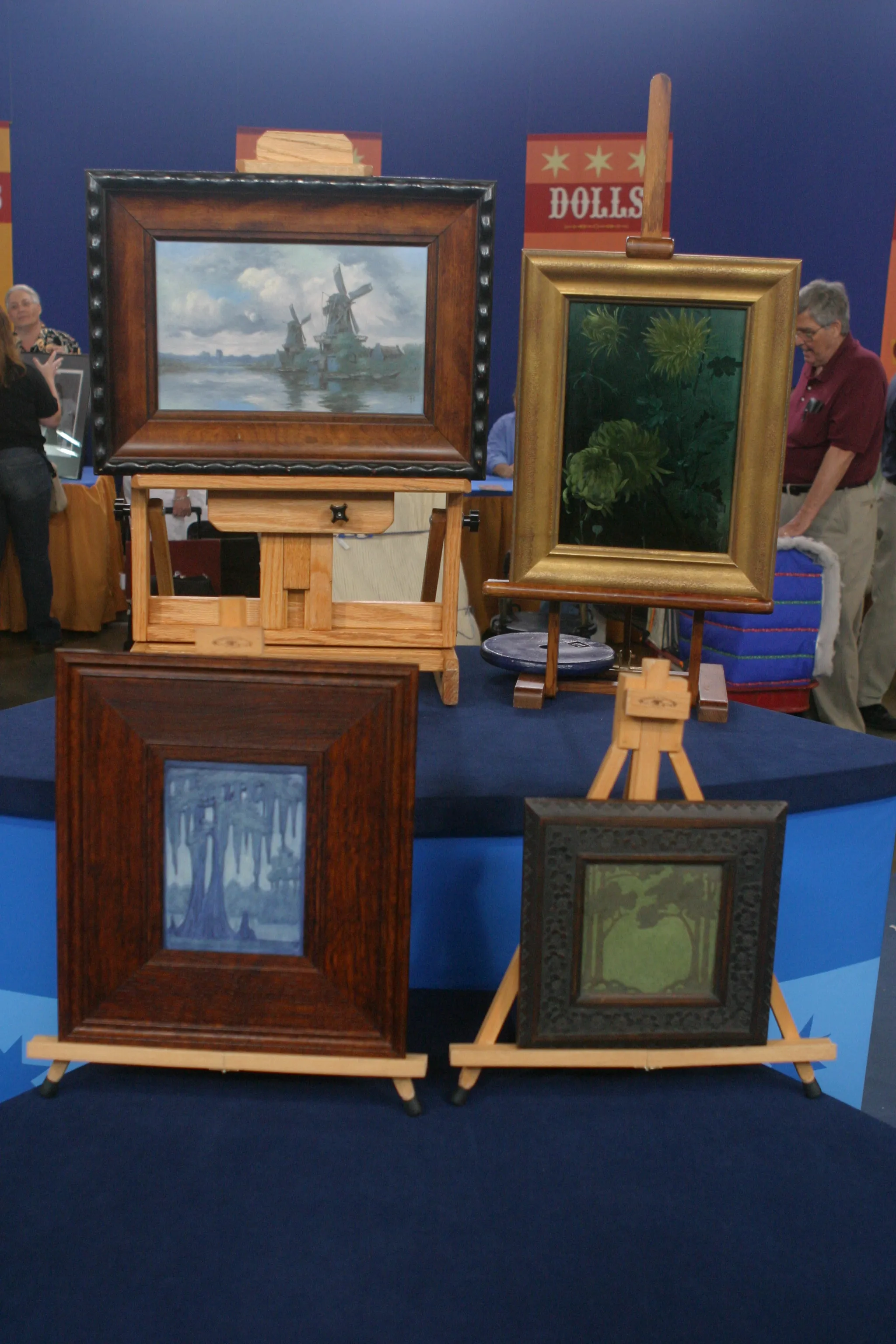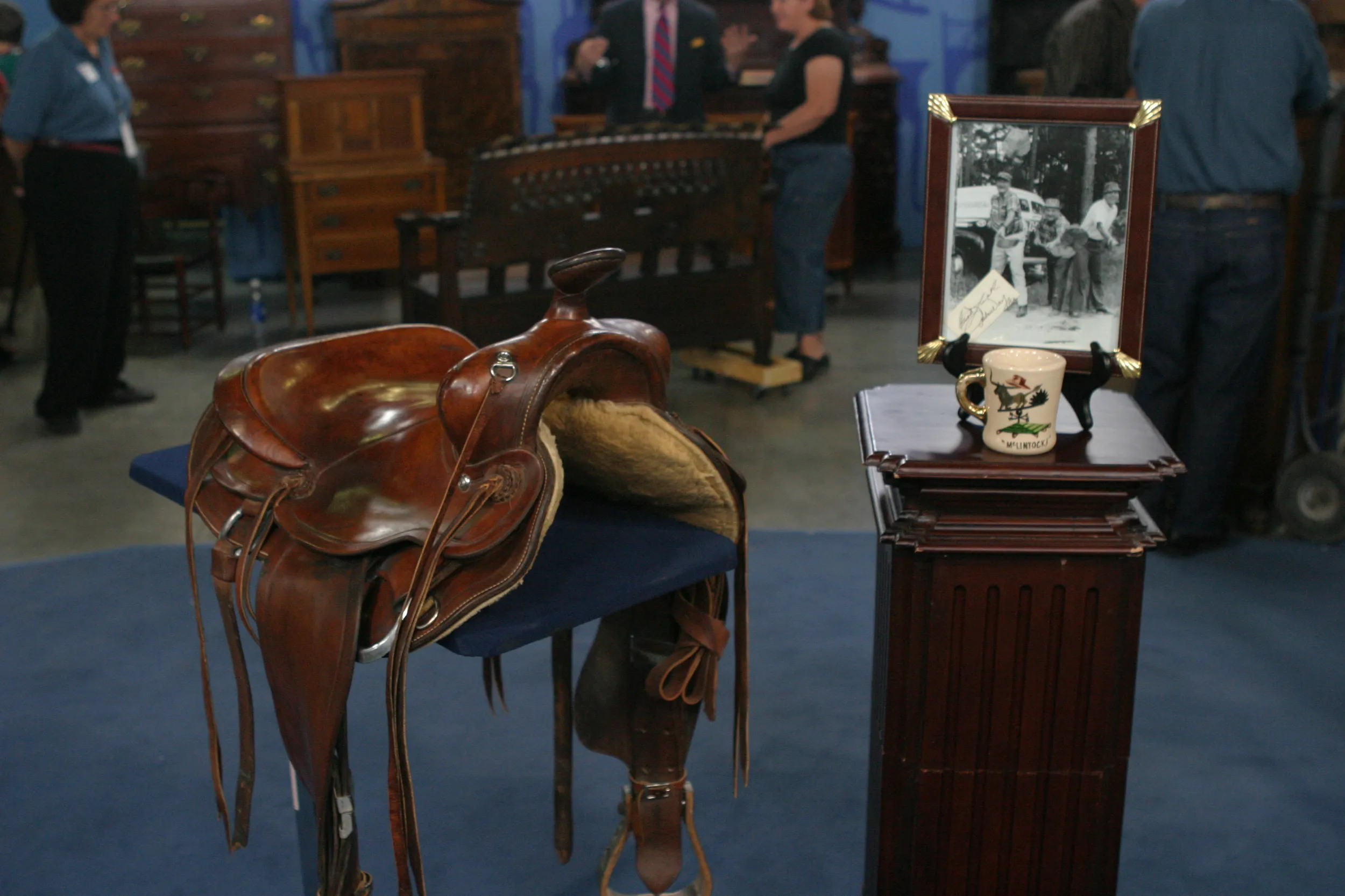GUEST: I purchased it from the previous abstract title company, and it's been in that company since 1936, that I know of.
APPRAISER: How long you have owned it?
GUEST: 16 years.
APPRAISER: 16 years.
GUEST: Mm-hmm.
APPRAISER: Well, this particular clock was made by the Seth Thomas Clock Company, and it's an unusual clock, because it was built for a purpose of tracking when people were coming and going. It was probably used in a boarding house or, perhaps, a hotel of some kind. And every room would be assigned a number. When a guest went in and out, they would flip one of these switches, and then when he returned, they probably flipped it back up again. That, in turn, made a mark on a piece of paper that would have been on this roll here, and they would have been able to record the motion of that person over a period of time. It's interesting that this is spring-driven-- big spring here on the fusee-- and it runs through cables over here. The clock itself is pretty basic. Seth Thomas used this movement in a lot of clocks. It probably runs for 15 days. And it's really good quality. It's nice that it has this Minneapolis, Minnesota, Time Recorder Company on it. Do you have any idea what value a clock like this would have?
GUEST: I don't know. I paid $100 for it.
APPRAISER: That's pretty good. In today's marketplace, there's a lot of interest in time-recording clocks, and this particular clock, I would probably estimate the value to be about $2,500.
GUEST: Wow.
APPRAISER: Mm-hmm.
GUEST: Well, it's shown in an old tintype. Somebody in the family's got that. It's been in the family for a long, long time. I grew up with the guy sitting on the top of the piano. But after we were married, when it finally came to me, along with this piano, my wife was afraid to let it stay out. So my kids haven't had a chance to grow up with this the way I did. It's been in the closet for the last 16 years.
APPRAISER: How far back in your family can you put it?
GUEST: At least as far back as my great-grandfather.
APPRAISER: It's actually pretty special. Now, I'm going to look at the mark first, because the mark is going to explain a lot.
GUEST: Uh-huh.
APPRAISER: And I'm curious as to, have you ever tried to read the mark before? Or did you even know there was a mark on the bottom?
GUEST: Well, I knew there was a mark. And somebody gave my mother a book about Bennington pottery.
APPRAISER: Right.
GUEST: So we've got some idea that it's more valuable.
APPRAISER: Well, this mark actually says "Fenton, Lyman, & Company." Now, you're correct in that it does come from Bennington. And the Fenton & Lyman Company was at that point in time, in 1849, a manufacturer of pottery in Bennington.
GUEST: Mm-hmm.
APPRAISER: And they made these lead-glazed, which they actually called flint-glazed animals. They made utilitarian wares, like kitchenwares. They made things like picture frames and flasks and they made these wonderful animals. Now, this on the top here is actually where they've taken little bits of clay and they've chopped it up. In fact, they call this technique coleslaw.
GUEST: Uh-huh, coleslaw?
APPRAISER: These have always been desirable. If you go back to the 1920s and 1930s and '40s, there were collectors that desired these back at that point in time.
GUEST: Mm-hmm.
APPRAISER: And even more so today. Now, these were made in pairs originally, so there was a left and a right, if you can believe it.
GUEST: Uh-huh, yeah.
APPRAISER: And you just have one of a pair. If this came up at a well-publicized auction, I would expect it to sell in the range of $4,000 to $6,000, conservatively.
GUEST: Uh-huh.
APPRAISER: And, certainly, to insure it as much as $7,500 or $8,000 wouldn't be unreasonable.
GUEST: (inhaling sharply) Ouch! (chuckles)
APPRAISER: So is it going on the piano, or is it going back in the closet?
GUEST: I'm afraid it's going to go back into the closet.

